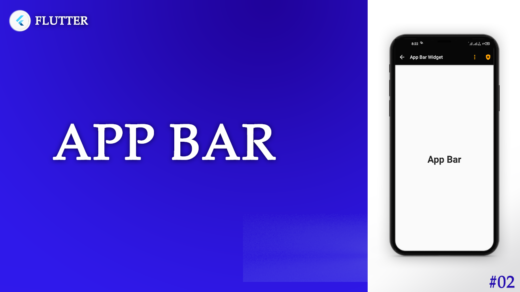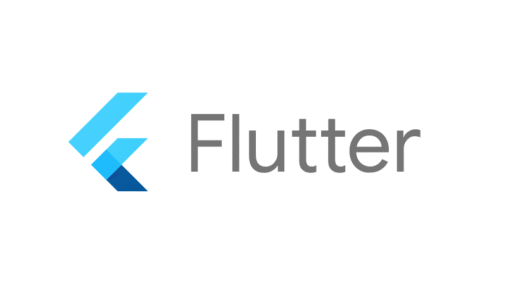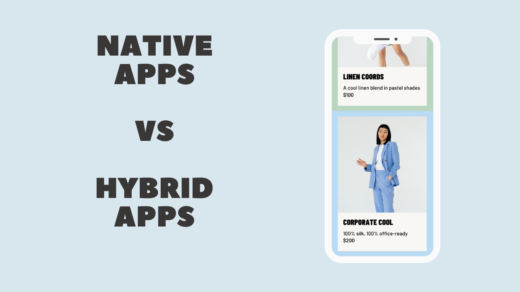Welcome to Day 8 of our Flutter journey, and the start of Week 2! You’ve learned how to build UIs, arrange widgets, and make them interactive. Today, we’re diving into a crucial concept that underpins all interactive Flutter apps: State Management, starting with the simplest and most fundamental tool, setState().
What is “State” in Flutter?
State Management: Understanding `setState()`
Learn how to make your Flutter app’s UI dynamic by updating its state.
What is “State” in Flutter?
The “state” of a widget is any data that can change over time and affect its appearance or behavior. Think of it as the current condition or data a widget holds that makes it look or act a certain way.
- A “Like” button’s state: `isLiked: true` or `false`.
- A counter’s state: the current `count` (e.g., `0`, `1`, `2`).
The Role of `setState()`
`setState()` is the method you call within a `StatefulWidget` to tell Flutter that some data has changed and the widget needs to be rebuilt to reflect those changes. Flutter is smart and only rebuilds what’s necessary.
- “Hey, some data (the ‘state’) in this widget has changed.”
- “Please rebuild this widget (and its children) to reflect the new data.”
Basic Structure: Message & Counter
Any changes to state variables *must* be wrapped inside the `setState()` call. Click the buttons below to see the text and counter update!
Hello!
Counter: 0
class _MyInteractiveWidgetState extends State<MyInteractiveWidget> {
String _message = 'Hello!';
int _counter = 0;
void _updateMessage() {
setState(() {
_message = 'Message Updated!';
});
}
void _incrementCounter() {
setState(() {
_counter++;
});
}
// ... build method with Text and ElevatedButton widgets
}
Example 1: Toggling a Status Indicator
This demonstrates how a single boolean state variable can control multiple visual properties of a widget, like a status light.
class _LightSwitchState extends State<LightSwitch> {
bool _isLightOn = false; // Renamed for clarity in example
void _toggleLight() {
setState(() {
_isLightOn = !_isLightOn;
});
}
@override
Widget build(BuildContext context) {
return Column(
children: [
Container( // Using a Container to represent the status indicator
width: 100,
height: 100,
color: _isLightOn ? Colors.green : Colors.red, // Changes color
child: Center(
child: Text(_isLightOn ? 'ON' : 'OFF', style: TextStyle(color: Colors.white, fontSize: 24)),
),
),
ElevatedButton(
onPressed: _toggleLight,
child: Text(_isLightOn ? 'Turn Off' : 'Turn On'),
),
],
);
}
}
Example 2: Simple Text Input Display
See how `setState()` is used with text input fields to update the displayed text in real-time as you type.
You typed:
class _TextInputDisplayState extends State<TextInputDisplay> {
String _inputText = '';
@override
Widget build(BuildContext context) {
return Column(
children: [
TextField(
onChanged: (text) {
setState(() {
_inputText = text;
});
},
decoration: InputDecoration(labelText: 'Type something...'),
),
Text('You typed: $_inputText'),
],
);
}
}
Limitations for Complex Apps
While `setState()` is great for simple, local state, it has limitations for larger applications:
- **Rebuilds the entire subtree:** Can lead to unnecessary rebuilds and performance issues.
- **State is local:** Hard to share state between distant widgets (“prop drilling”).
- **Harder to test:** Logic can become intertwined with UI.
For these reasons, more advanced state management solutions are used in complex Flutter apps, which we’ll explore later!
In simple terms, the “state” of a widget is any data that can change over time and affect the appearance or behavior of that widget.
Think of a “Like” button:
- Its state could be
isLiked: trueorisLiked: false. - When you tap it, its state changes, and its appearance (e.g., color, icon) updates.
Or a counter:
- Its state is the current
count(e.g.,0,1,2). - When you tap “increment,” the
countchanges, and the number on the screen updates.
The Role of setState()
Remember from Day 5 that Stateful Widgets are widgets that can change their appearance dynamically. The magic behind this dynamic updating is the setState() method.
When you call setState(), you’re essentially telling Flutter two things:
- “Hey, some data (the ‘state’) in this widget has changed.”
- “Please rebuild this widget (and its children) to reflect the new data.”
Flutter is very efficient. When setState() is called, it doesn’t redraw the entire screen. Instead, it intelligently figures out which parts of the UI need to be updated based on the state changes, making your app fast and smooth.
When and How to Use setState()
You use setState() inside the State class of a StatefulWidget. Any changes you make to the state variables must be wrapped inside the setState() call.
Basic Structure:
class MyInteractiveWidget extends StatefulWidget {
@override
_MyInteractiveWidgetState createState() => _MyInteractiveWidgetState();
}
class _MyInteractiveWidgetState extends State<MyInteractiveWidget> {
// 1. Declare your state variables here
String _message = 'Hello!';
int _counter = 0;
// A method to update the state
void _updateMessage() {
setState(() { // <--- Call setState()
_message = 'Message Updated!'; // <--- Change state variables inside setState()
});
}
void _incrementCounter() {
setState(() { // <--- Call setState()
_counter++; // <--- Change state variables inside setState()
});
}
@override
Widget build(BuildContext context) {
return Column(
mainAxisAlignment: MainAxisAlignment.center,
children: [
Text(_message), // This text will update when _message changes
ElevatedButton(
onPressed: _updateMessage,
child: Text('Change Message'),
),
SizedBox(height: 20),
Text('Counter: $_counter'), // This text will update when _counter changes
ElevatedButton(
onPressed: _incrementCounter,
child: Text('Increment Counter'),
),
],
);
}
}
Key Points:
- Always call
setState(): If you change a state variable but don’t callsetState(), Flutter won’t know that the UI needs updating, and your changes won’t be visible on the screen. - Keep it simple:
setState()is great for local, simple state changes within a single widget or a small part of the widget tree.
Simple Examples Demonstrating State Changes
Let’s look at a couple of common scenarios:
Example 1: Toggling a Light Switch
class LightSwitch extends StatefulWidget {
@override
_LightSwitchState createState() => _LightSwitchState();
}
class _LightSwitchState extends State<LightSwitch> {
bool _isLightOn = false; // Initial state: light is off
void _toggleLight() {
setState(() { // When the button is pressed, update the state
_isLightOn = !_isLightOn; // Flip the boolean value
});
}
@override
Widget build(BuildContext context) {
return Column(
mainAxisAlignment: MainAxisAlignment.center,
children: [
Icon(
_isLightOn ? Icons.lightbulb : Icons.lightbulb_outline, // Change icon based on state
size: 100,
color: _isLightOn ? Colors.amber : Colors.grey, // Change color based on state
),
SizedBox(height: 20),
ElevatedButton(
onPressed: _toggleLight,
child: Text(_isLightOn ? 'Turn Off' : 'Turn On'), // Change button text based on state
),
],
);
}
}
In this example, _isLightOn is the state. When _toggleLight is called, setState() ensures the icon and button text update to reflect the new light status.
Example 2: Simple Text Input Display
class TextInputDisplay extends StatefulWidget {
@override
_TextInputDisplayState createState() => _TextInputDisplayState();
}
class _TextInputDisplayState extends State<TextInputDisplay> {
String _inputText = ''; // State to hold the current input text
@override
Widget build(BuildContext context) {
return Column(
mainAxisAlignment: MainAxisAlignment.center,
children: [
TextField(
onChanged: (text) {
setState(() { // Update state on every text change
_inputText = text;
});
},
decoration: InputDecoration(
labelText: 'Type something...',
border: OutlineInputBorder(),
),
),
SizedBox(height: 20),
Text('You typed: $_inputText'), // Display the live input
],
);
}
}
Here, _inputText is the state. Every time the user types, onChanged triggers setState(), which updates _inputText and causes the Text widget to immediately show the new input.
Limitations for Complex Apps
While setState() is powerful and easy to use for simple cases, it has limitations, especially as your app grows:
- Rebuilds the entire subtree: When you call
setState()on a widget, that widget and all its children (even those whose state hasn’t changed) are rebuilt. In complex UIs, this can lead to unnecessary rebuilds and potential performance issues. - State is local: State managed by
setState()is confined to the widget where it’s declared and its direct children. Sharing state between distant parts of your app (e.g., a user’s login status across many screens) becomes cumbersome. You’d have to “pass state down” through many widget constructors, which is known as “prop drilling.” - Harder to test: As logic becomes intertwined with UI in
setState()calls, it can be harder to separate and test your business logic independently.
For these reasons, as your Flutter apps become more complex and require sharing state across many widgets, you’ll want to explore more advanced State Management Solutions. We’ll touch upon one of these, Provider, in Day 9!
Conclusion
Today, you’ve gained a fundamental understanding of setState(), the cornerstone of interactive Flutter development. You now know how to update the UI dynamically by changing a widget’s state. While powerful for local state, you’ve also learned its limitations, setting the stage for more advanced state management techniques.Tomorrow, on Day 9, we’ll delve into Mastering Navigation – how to move between multiple screens in your Flutter app, a crucial step for any real-world application!




